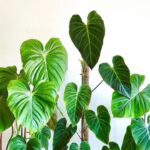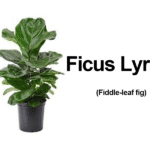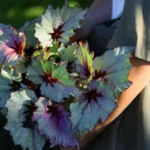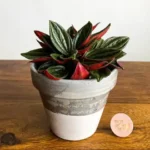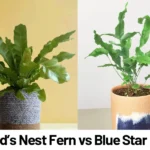Indoor plants don’t just make a space look beautiful—they also improve air quality, boost your mood, and add life to even the darkest corners of your home. But choosing the right plant can be daunting, especially if you’re short on time, experience, or natural sunlight. That’s why we’ve put together a practical guide to the Top 10 Indoor Plants for Low-Light Homes. Whether you live in a shaded apartment, have windowless bathrooms, or simply want easygoing greenery to brighten up your home, this list is designed for you.
Each plant listed below thrives in lower-light conditions (under 1000 lux) and offers unique benefits, from being safe around pets to requiring minimal maintenance. Let’s dig in and find the perfect plant friend for your space.
1. Snake Plant (Sansevieria trifasciata)
- Why it’s great: Tolerates low light and infrequent watering—practically thrives on neglect.
- Light: 50–500 lux (can adapt to brighter spots too)
- Watering: Every 2–3 weeks (allow soil to dry completely)
- Humidity: Low to average (30–50%)
- Fun fact: NASA found it excellent at filtering airborne toxins like formaldehyde (Wolverton, 1996).
- Tags: “for busy people”, “great for bedrooms”, “air-purifying”
2. ZZ Plant (Zamioculcas zamiifolia)
- Why it’s great: Can go weeks without water and grows well in shade
- Light: 50–600 lux
- Watering: Every 2–4 weeks (wait for soil to fully dry)
- Humidity: Low humidity tolerant
- Fun fact: Its glossy leaves are coated in a natural wax that prevents moisture loss.
- Tags: “low-maintenance”, “great for offices”, “for beginners”
3. Pothos (Epipremnum aureum)
- Why it’s great: Grows vigorously even under fluorescent lighting
- Light: 100–1000 lux
- Watering: Weekly, or when top inch of soil dries
- Humidity: Average to high (40–70%)
- Fun fact: Also known as “Devil’s Ivy” because it’s nearly impossible to kill
- Tags: “great for dark rooms”, “fast-growing”, “air-purifying”
4. Cast Iron Plant (Aspidistra elatior)
- Why it’s great: Named for its tough-as-nails tolerance to neglect and darkness
- Light: 50–500 lux
- Watering: Every 10–14 days
- Humidity: Low humidity friendly
- Fun fact: Loved in Victorian era homes for thriving in candle-lit interiors
- Tags: “for low-light rooms”, “for travelers”, “pet-friendly”
5. Peace Lily (Spathiphyllum spp.)
- Why it’s great: One of the few flowering plants that bloom in low-light settings
- Light: 75–800 lux
- Watering: Weekly; needs consistent moisture
- Humidity: Prefers higher humidity (50–70%)
- Fun fact: Removes benzene, trichloroethylene, and ammonia from the air (Wolverton et al., 1989).
- Tags: “great for bathrooms”, “floral”, “air-purifying”
6. Chinese Evergreen (Aglaonema spp.)
- Why it’s great: Adapts to almost any indoor environment, including dimly lit rooms
- Light: 75–800 lux
- Watering: Every 7–10 days
- Humidity: Average (40–60%) ideal
- Fun fact: Cultivars come in a range of colors—from green and silver to pink
- Tags: “colorful foliage”, “low-light”, “easy care”
7. Heartleaf Philodendron (Philodendron hederaceum)
- Why it’s great: Thrives in low to moderate light and has graceful trailing vines
- Light: 100–800 lux
- Watering: Every 7–10 days
- Humidity: Appreciates higher humidity (50–70%)
- Fun fact: NASA included it in their indoor air pollution abatement study
- Tags: “trailing plant”, “great for hanging baskets”, “air-purifying”
8. Parlor Palm (Chamaedorea elegans)
- Why it’s great: Tolerates very low light and low humidity, making it ideal for busy households
- Light: 50–400 lux
- Watering: Every 1–2 weeks
- Humidity: Adaptable (30–50%)
- Fun fact: A favorite in Victorian homes and still one of the most popular indoor palms
- Tags: “pet-friendly”, “classic look”, “great for beginners”
9. Spider Plant (Chlorophytum comosum)
- Why it’s great: Survives low-light and produces adorable “pups” for easy propagation
- Light: 100–800 lux
- Watering: Weekly
- Humidity: Average to high (40–70%)
- Fun fact: Studies show it removes airborne pollutants like carbon monoxide (Wolverton et al., 1989).
- Tags: “pet-friendly”, “kid-safe”, “good for kitchens”
10. Fernwood Mikado Sansevieria (Sansevieria cylindrica ‘Fernwood’)
- Why it’s great: A sculptural, compact version of the snake plant that fits even on desktops
- Light: 75–600 lux
- Watering: Every 2–3 weeks
- Humidity: Low humidity tolerant
- Fun fact: Cylindrical foliage allows it to store more water than flat-leafed succulents
- Tags: “space-saving”, “for dark corners”, “desk plant”
Conclusion
You don’t need a sunny windowsill or a green thumb to enjoy indoor plants. With the right species, even poorly lit rooms can become lush, thriving environments. Start with one or two from the list above, and build your confidence—and your indoor jungle—from there.
References
- Wolverton, B. C. (1996). How to Grow Fresh Air: 50 House Plants that Purify Your Home or Office. Penguin Books.
- Wolverton, B. C., Johnson, A., & Bounds, K. (1989). Interior Landscape Plants for Indoor Air Pollution Abatement. NASA Report. Retrieved from https://ntrs.nasa.gov/
- Costa, A. R., Leonhardt, S. D., & Borges, R. M. (2022). Plant–pollinator interactions in indoor environments: how houseplants contribute to biodiversity. Ambio, 51(4), 1000–1010. https://doi.org/10.1007/s13280-021-01598-3
- Brundrett, M. C. (2017). Identifying and understanding healthy root systems. Plant and Soil, 421(1–2), 1–8. https://doi.org/10.1007/s11104-017-3282-6
- Hershey, D. R. (1995). Myths of indoor plants. The American Biology Teacher, 57(3), 146–148. https://doi.org/10.2307/4450894

